The basic light is pretty well-engineered. It has what look remarkably like four CREE XM-L T6 chips (under microscope inspection), with a good thermal bond to an aluminium back casting, plus cast alu reflector (not plastic). All that solid metal should mean good heat dissipation. The outer housing is a nice bit of machined alu too, with O-ring seals and cable glands to keep most of the rain/mud out. Not a bad donor light.
The driver board is a bit on the weak side: it's a QX9920-based boost converter, with a decent sized MOSFET for switching duties, though the main inductor looks a bit small (like it might saturate and/or get hot). As usual for these kind of lights, there's a PIC/clone which controls the lamp dimming and switches between red and green LEDs to show battery state. It has two brightness modes, 'full' and 'half'(ish), as well as a driver-annoying strobe mode.
Performance? Well, it's about as bright as my dual-LED light, which also has CREE XM-L's. This is not too surprising since both lamps draw about the same current (1.8A from 7.4V). So although the new light has 4 LEDs, they're only being driven half as hard. Plenty of scope for improvement then...
The plan is a) to mod the hardware to push a bit more current through the LEDs, and b) mod the firmware to add some more helpful dimming modes.
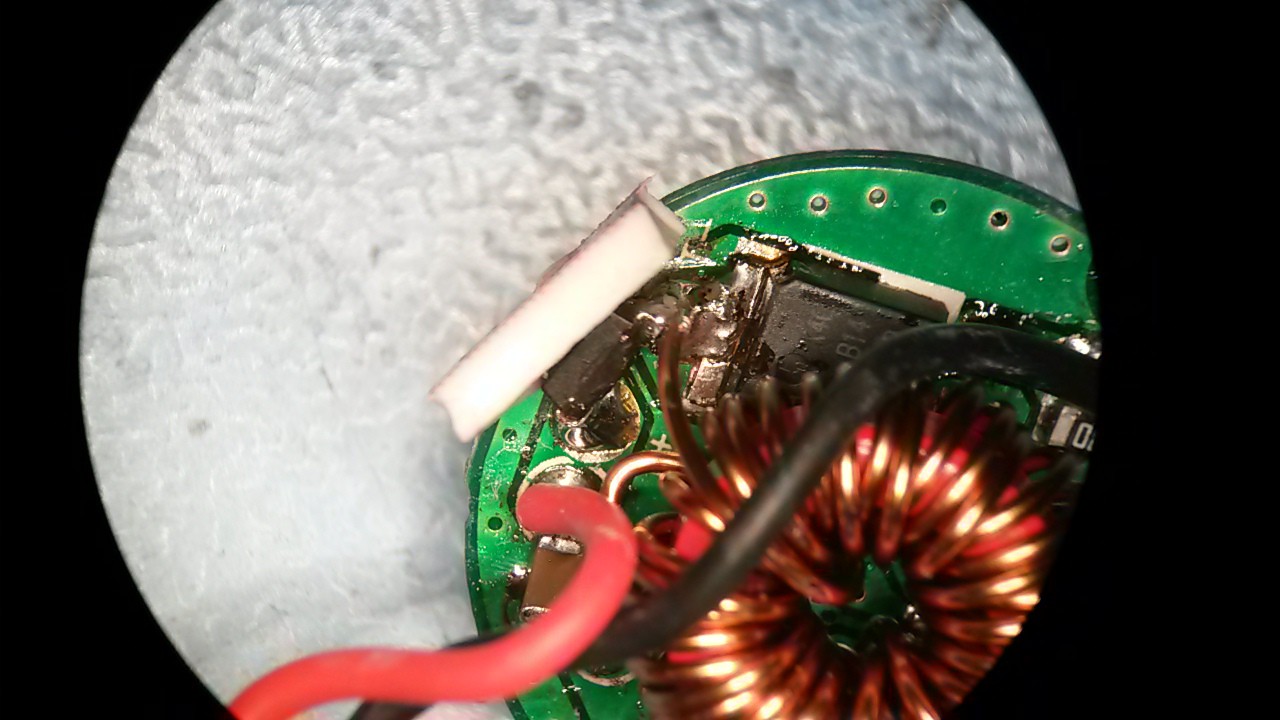
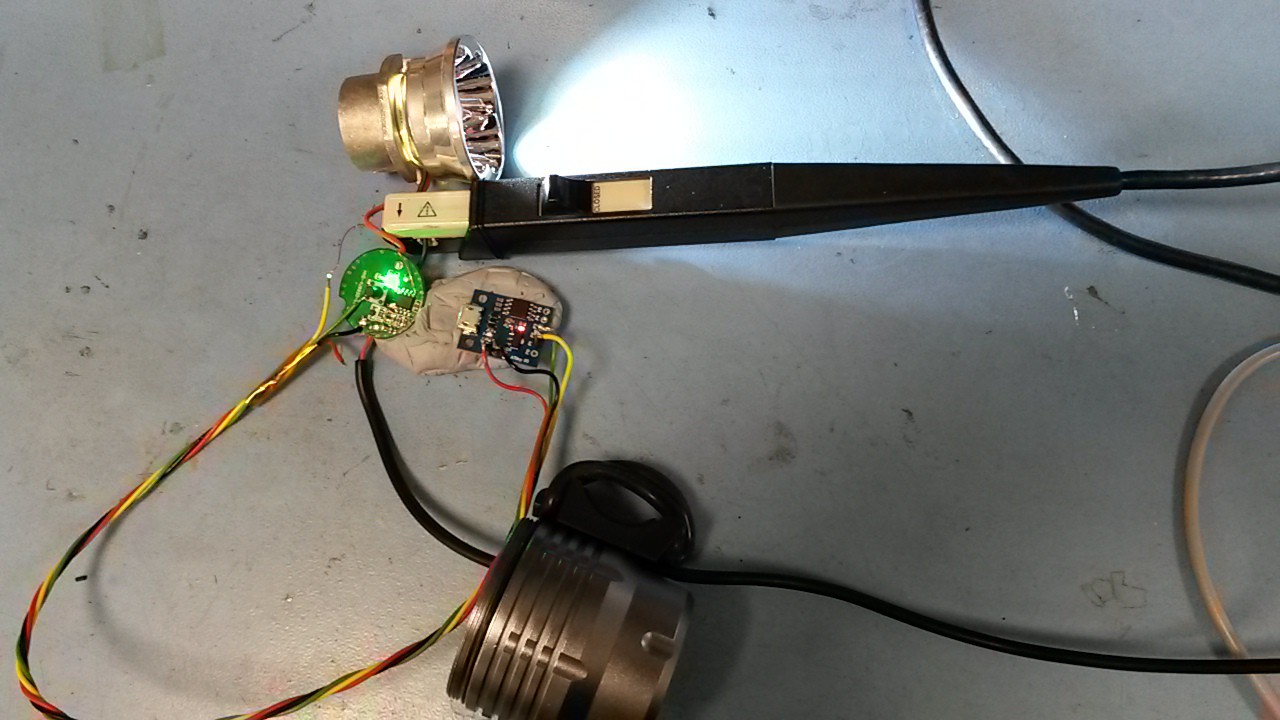
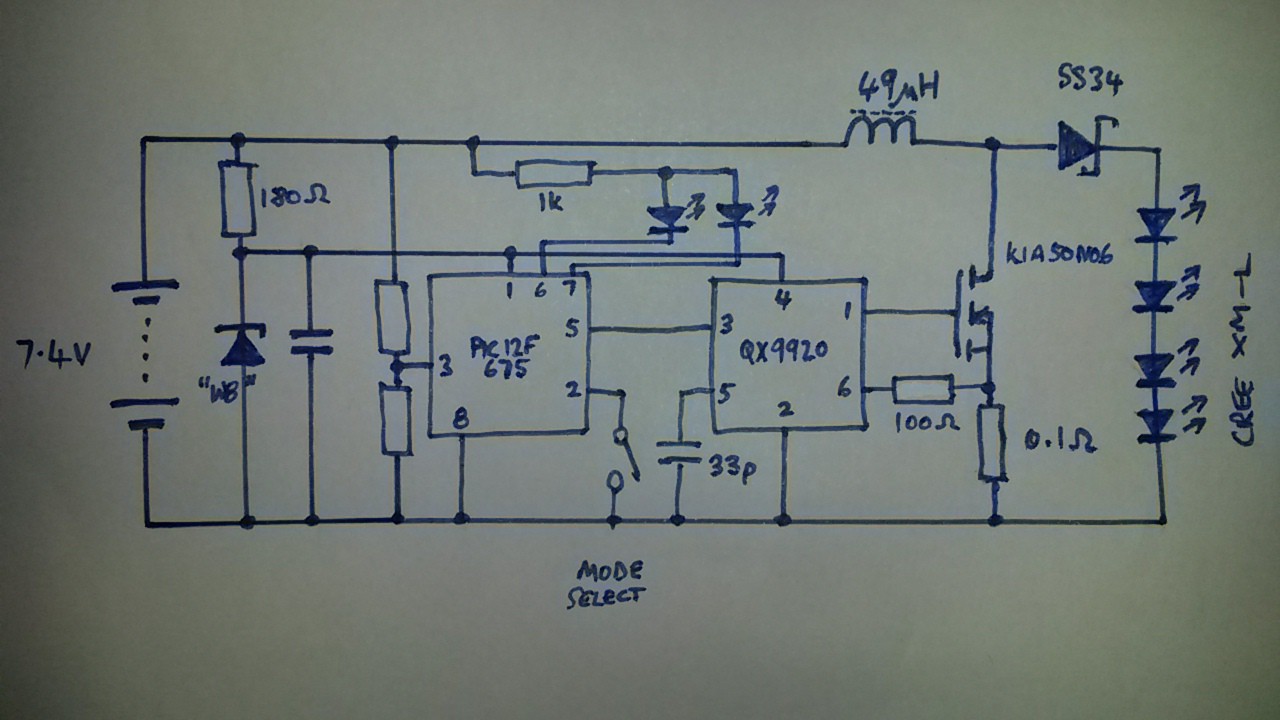
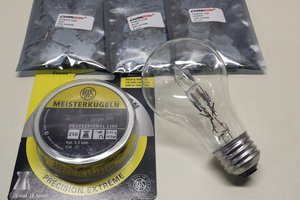
 Ted Yapo
Ted Yapo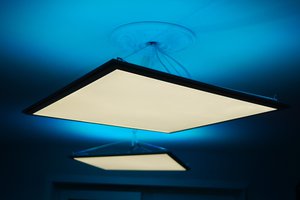
 Mikhail Svarichevsky
Mikhail Svarichevsky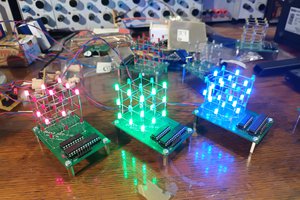
 Timo
Timo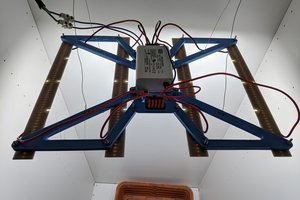
 Niko
Niko